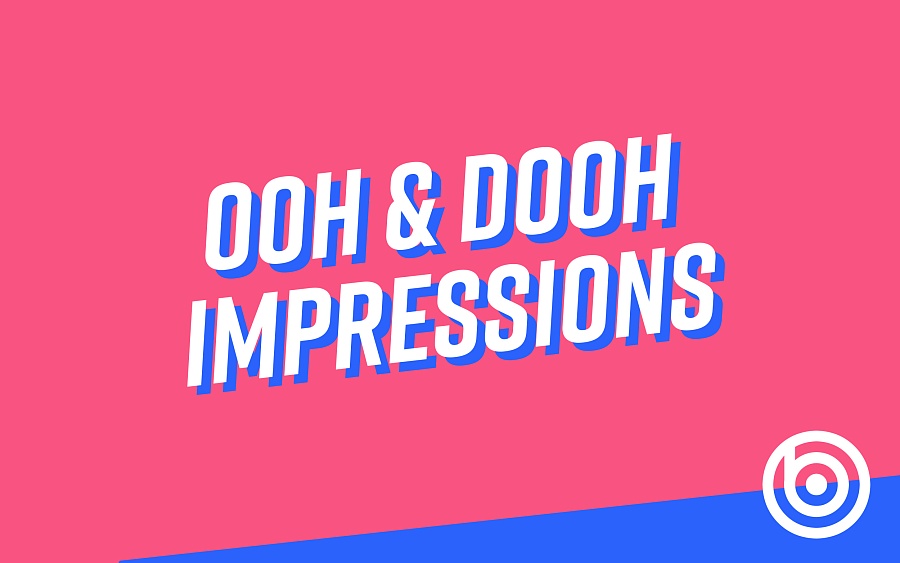January 1, 1970 | Manuel Klabacher
The Art of Impressions: Comparing DOOH Screen Advertising and 24/7 Posters
Advertising is an essential tool for businesses, utilized to reach, engage, and hopefully convert audiences into loyal customers. Within the domain of Out-of-Home (OOH) advertising, we have traditional forms such as static posters and the more recent Digital Out-of-Home (DOOH) advertisements. The latter, with its attractive dynamic visual content, might seem like the more effective option. However, it's essential to consider the frequency of impressions, especially when you compare a 10-second spot on a DOOH screen to a static poster that hangs 24 hours a day. Here's why.
Firstly, impressions - the number of times an ad is seen - are a crucial metric in advertising. More impressions often equate to a higher possibility of engagement and conversion. A static poster that is visible 24/7, by virtue of its constant visibility, accumulates impressions continually, while a 10-second DOOH ad relies on the timing of passersby to register an impression.
Why is this important?
Audience Reach:
A 24/7 poster has the potential to reach a broader audience. As it's constantly visible, anyone passing by at any time of the day or night can see the ad, generating an impression. In contrast, a 10-second DOOH spot might miss a significant portion of potential viewers, especially if it's in a high-traffic location where individuals may not have the chance to pause and watch the ad during their busy commutes.
Repetition and Memorability:
Repetition plays a vital role in advertising. The more frequently an individual sees an ad, the higher the chance they'll remember the product or service. With a static poster that's present 24/7, passersby on a daily route are likely to see it multiple times, increasing memorability. A 10-second DOOH ad, on the other hand, requires precise timing for the same individual to see it repeatedly.
Viewing Time:
With a static poster, viewers have the luxury to look and process the information at their own pace. However, a 10-second DOOH ad might not provide enough time for viewers to fully absorb the information, potentially reducing the effectiveness of the ad.
Budget Efficiency:
Static posters often offer a more budget-friendly option for advertisers. While DOOH ads might seem more attractive with their dynamic capabilities, their cost-effectiveness should be evaluated against the potential impressions they might miss due to their time-bound nature.
To conclude, while DOOH advertising has unique advantages such as the ability to display dynamic and targeted content, it's essential for advertisers to consider their objectives, audience, and budget. A 10-second spot on a DOOH screen, despite its modern appeal, doesn't guarantee more impressions than a 24/7 hanging poster. The choice between these advertising methods should be guided by a comprehensive understanding of the nuances of impressions, the target audience's behaviors, and the cost-effectiveness of each medium.
Firstly, impressions - the number of times an ad is seen - are a crucial metric in advertising. More impressions often equate to a higher possibility of engagement and conversion. A static poster that is visible 24/7, by virtue of its constant visibility, accumulates impressions continually, while a 10-second DOOH ad relies on the timing of passersby to register an impression.
Why is this important?
Audience Reach:
A 24/7 poster has the potential to reach a broader audience. As it's constantly visible, anyone passing by at any time of the day or night can see the ad, generating an impression. In contrast, a 10-second DOOH spot might miss a significant portion of potential viewers, especially if it's in a high-traffic location where individuals may not have the chance to pause and watch the ad during their busy commutes.
Repetition and Memorability:
Repetition plays a vital role in advertising. The more frequently an individual sees an ad, the higher the chance they'll remember the product or service. With a static poster that's present 24/7, passersby on a daily route are likely to see it multiple times, increasing memorability. A 10-second DOOH ad, on the other hand, requires precise timing for the same individual to see it repeatedly.
Viewing Time:
With a static poster, viewers have the luxury to look and process the information at their own pace. However, a 10-second DOOH ad might not provide enough time for viewers to fully absorb the information, potentially reducing the effectiveness of the ad.
Budget Efficiency:
Static posters often offer a more budget-friendly option for advertisers. While DOOH ads might seem more attractive with their dynamic capabilities, their cost-effectiveness should be evaluated against the potential impressions they might miss due to their time-bound nature.
To conclude, while DOOH advertising has unique advantages such as the ability to display dynamic and targeted content, it's essential for advertisers to consider their objectives, audience, and budget. A 10-second spot on a DOOH screen, despite its modern appeal, doesn't guarantee more impressions than a 24/7 hanging poster. The choice between these advertising methods should be guided by a comprehensive understanding of the nuances of impressions, the target audience's behaviors, and the cost-effectiveness of each medium.

